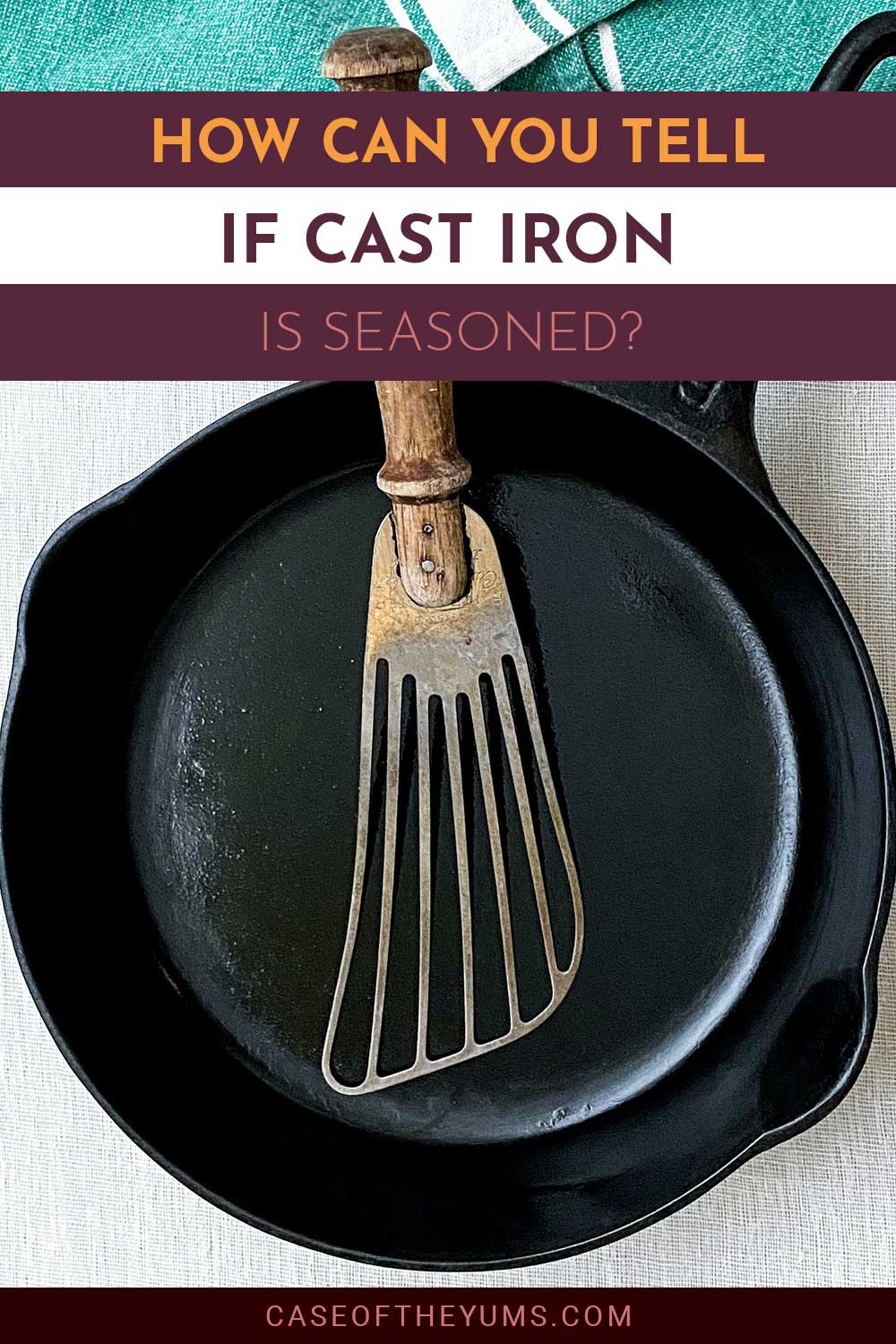How Can You Tell If Cast Iron Is Seasoned?
We may earn commissions for purchases made through links on our site. Learn more on our about us page.
Owning cast iron cookware is a lifestyle. The cast iron needs consistent maintenance to keep it around for generations. Keeping it around for generations is the goal and nearly the entire purpose of investing in and owning cast iron cookware.
Let’s discuss everything you need to know about cast iron cookware, specifically when it comes to seasoning the cookware. You can typically tell if cast iron cookware is seasoned adequately by the color and texture of the cookware. How can you spot it?

How Can You Spot It?
There are typically three factors to take into consideration when trying to spot if your cast iron cookware has been well-seasoned. First, if the cookware has no rust and is darker in color, it’s a sign that the cast iron has been well taken care of.
The cast iron should also have a partial gloss-like finish throughout the entire surface area of the pan, with no spots of the cookware being missed. While the pan should have a gloss-like finish, that does not mean that the cast iron should feel greasy or have a residue that sticks.
Can Cast Iron be Over-Seasoned?
Cast iron cookware can be over seasoned, which can harm the cookware’s lifespan. Let’s be honest that seasoning the cast iron can be very tedious, and for those relatively new to owning the cookware, it can be easy to make a few errors.
If the cast iron is over-seasoned, the surface can become sticky or too greased. Extra unwanted build-up can also appear over time after each use. This is why it’s important to clean and season your cookware correctly.
How Many Times Should You Season It?
Many will season their cast iron cookware differently, at different times – which is fine because either of these ways works just fine. While it’s okay to simply season the cookware 2-3 times a year, there are others who will do so more often than that.
Some will clean and reseason a cast iron after every use or whenever it comes out of the cabinet. Those who do this are significantly improving the lifespan of their cast iron cookware because it prevents any rust or dull spots from appearing if you are using it regularly.
Should Cast Iron Be Sticky After Seasoning?
No, cast iron cookware should not feel sticky after seasoning. If it is, it’s most likely because an excessive amount of oil has built up on the pan’s surface. So while you can still use sticky cast iron cookware for cooking food, it will do nothing but make the build-up worse.
There are two ways to remove the oily-sticky build-up. First, wash the pan and hand dry it before seasoning it again. The second is a little less complicated.
Place the cast iron cookware into your oven for an hour at 400-500 degrees. This should do the trick – and it’s easier.
Common Mistakes You Need to Avoid While Seasoning
It’s ideal to avoid using soap and other chemicals when cleaning your cast iron cookware before seasoning it. However, beginners sometimes make mistakes when caring for cast iron in the beginning.
Another common mistake that will often happen is that when seasoning cast iron cookware, there are some spots that often get missed or overlooked. Seasoning the entire surface area of the pan is essential to avoid any early rusting.
Final Thoughts on Seasoned Cast Iron
To tell if your cast iron cookware is seasoned, you will notice characteristics such as a darker color or a slight glass to the surface of the cast iron. Cast iron can also get over-seasoned, which is something you need to look out for as a new owner of the material.
When you cast iron cookware’s surface appears to be sticky, it’s a sign that it has been over-seasoned. Typical mistakes many new cast iron owners will endure are overheating the pan and using the incorrect cleaning products before the seasoning process.



Leave a Reply
You must be logged in to post a comment.